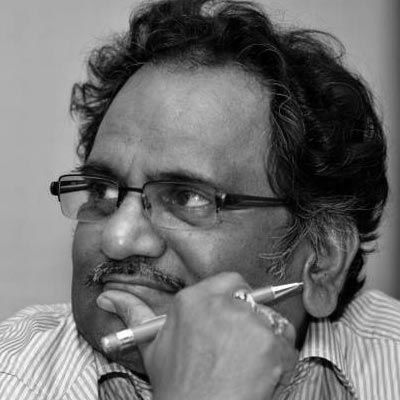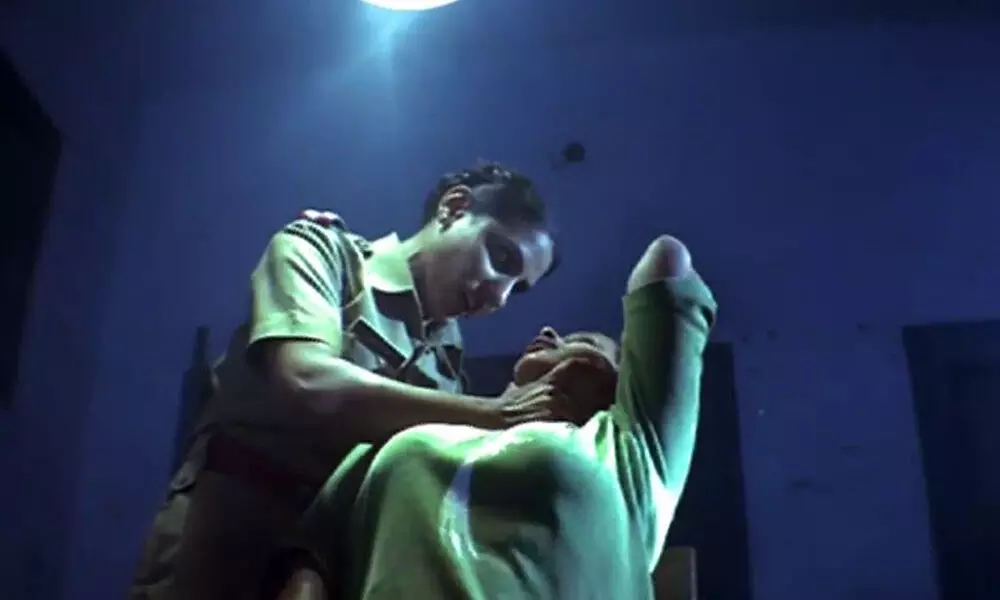Live
- First Star Outside Milky Way Captured: WOH G64 is 2,000 Times Larger Than the Sun
- Sikkim govt to constitute state Niti Ayog: CM Tamang
- CBI books Rajasthan narcotics inspector for Rs 3 lakh bribe
- Rajasthan bypolls: A tough contest between BJP and Congress
- Albania joins SEPA, paving way for EU integration
- Japanese government approves 250-billion USD economic package to ease price pain
- Six pharma companies to set up their units in Telangana
- The Unstable Events of a 17-Wicket Day in Perth: India vs Australia
- Dutch FM's Israel trip cancelled after Netanyahu's arrest warrant
- UK to increase energy price cap by 1.2 per cent
Just In
Will SC check CCTVs to police the cops?


Will SC check CCTVs to police the cops?
On December 10, we celebrated Universal Declaration of Human Rights
On December 10, we celebrated Universal Declaration of Human Rights. There is no huge difference between Human Rights and Constitutional Rights, which in India followed 1948 declaration with appropriate incorporation of fundamental rights. When a statutory office holder like police and jail authorities abuse their power and instead of protecting rights of persons in custody, they deliberately cause hurt or death to them, it is violation of human right. Where do you file a complaint against the police and which police will register? If a murder case has to be filed for custodial death or fake encounter, do you have a place to receive complaint and investigate?
'Who will police the police' is a big question for which the world could not give any answer till today. But Supreme Court on 2 December 2020 tried to find a solution to this problem in CCTV cameras, which probably can police the police.
Supreme Court asked the government to fix cameras in every possible place where the police interrogates the persons. To avoid efforts or difficulties of investigation, the police mostly use easy technic of torture to extract the information and then collect evidence. The technology available could be effectively used for prevention of violation of Human Rights by the police. The Madras High Court directed the State to make police transparent towards the family of victim of custodial violence and also gave specific guidelines to the judicial magistrates and sessions judges.
The Supreme Court Bench directed the governments at the Centre, all the States and Union Territories to install CCTVs with night vision cameras in each police station, including Central probe agencies such as CBI, ED, NIA etc across India. Justice RF Rohinton Nariman, heading a Bench with two other judges K M Joseph, Aniruddha Bose, said: "The State and Union Territory governments should ensure that CCTV cameras are installed in every police station functioning in the respective State and/or Union Territory. In addition, the Union of India is also directed to install CCTV cameras and recording equipment in the offices of: CBI, NIA, ED, NCB, DRI, SFIO and any other agencies which carries out interrogations and has the power to arrest…" The CCTV systems "must be equipped with night vision and must necessarily consist of audio as well as video footage… The SHO of the police station concerned shall be responsible for the working, maintenance and recording of CCTVs". the SC also ordered constitution of Oversight Committees at State and district levels for this purpose. Most of the areas in our country do not have power connection and internet band width. The SC ordered to provide the same as expeditiously as possible. It directed storage of footage for 18 months. The Supreme Court went into details and ordered that the CCTV camera footage should be stored in digital video recorders and/or network video recorders. Importantly, the recording system should be such that the data stored therein is preserved for 18 months.
It was not for the first time SC was dealing with this issue. On 3 April 2018 in SLP (Crl) No. 2302 of 2017, in Shafhi Mohammad Vs. State of Himachal Pradesh (2018) 5 SCC 311, it has directed that a Central Oversight Body (COB) be set up by the Ministry of Home Affairs to implement the plan of action with respect to the use of videography in the crime scene during the investigation. The Supreme Court in D K Basu Vs. State of West Bengal & Others (2015) 8 SCC 744, held that there was a need for further directions that in every State an oversight mechanism be created whereby an independent committee can study the CCTV camera footages and periodically publish a report of its observations thereon. The COB was further directed to issue appropriate instructions in this regard at the earliest. Court wanted COB to issue necessary directions to make videography a reality with implementation of first phase by July 2018, which did not happen. The crime scene videography ought to be introduced at least at some places as per viability and priority determined by the COB.
The Ministry of Home Affairs constituted COB to oversee the implementation of the use of photography and videography in the crime scene by the State/Union Territory government and other Central agencies, to suggest the possibility of setting up a Central Server for implementation of videography.
Directions were issued to the administrators of the Union Territory, State governments, and other Central agencies for effective implementation of the use of photography and videography at the crime scenes, and to furnish an Action Taken Report on the implementation of the use of videography in the crime scene.
The SC mentioned that nothing substantial was done for 2 and half years to implement the SC directions and impleaded all states and union territories to file affidavits explaining the compliance of its earlier orders. The compliance affidavits and Action Taken Reports were filed by 14 States (till 24.11.2020), namely, West Bengal, Chhattisgarh, Tamil Nadu, Punjab, Nagaland, Karnataka, Tripura, Uttar Pradesh, Assam, Sikkim, Mizoram, Madhya Pradesh, Meghalaya, Manipur; and 2 Union Territories, namely, Andaman & Nicobar Islands and Puducherry. (It means two Telugu States did not file). But they failed to disclose the ground position of installation of CCTV cameras in each police station. The SC noticed that they are bereft of details with respect to the total number of police stations functioning in the respective State and Union Territory; total number of CCTV cameras installed in each police station; the positioning of the CCTV cameras already installed; working condition of the CCTV cameras; whether the CCTV cameras have a recording facility, if yes, then for how many days/hours, have not been disclosed.
When most of the States do not file affidavits, though mandated, and do not disclose the real status, can we hope that this judgment becomes a reality? The constitution of Oversight Committees in accordance with the Order dated 03.04.2018, and/or details with respect to the Oversight Committees already constituted in the respective States and Union Territory have also not been disclosed. The apex court instructed States and UTs to file compliance affidavits within six weeks.
SC reminded that these directions are in furtherance of the fundamental rights of each citizen of India guaranteed under Article 21 of the Constitution of India. It directed the States and UTs to implement 2018 order of SC both in letter and in spirit as soon as possible and file affidavits of compliance within six weeks.
The constitution of Oversight Committees in accordance with Supreme Court Order dated 03.04.2018 should be done at the State and District levels. The State Level Oversight Committee (SLOC) must consist of: (i) The Secretary/Additional Secretary, Home Department; (ii) Secretary/Additional Secretary, Finance Department; (iii) The Director General/Inspector General of Police; and (iv) The Chairperson/member of the State Women's Commission. It shall be the duty of the SLOC to see that the directions passed by this Court are carried out. Amongst others, the duties shall consist of: a) Purchase, distribution and installation of CCTVs and its equipment; b) Obtaining the budgetary allocation for the same; c) Continuous monitoring of maintenance and upkeep of CCTVs and its equipment; d) Carrying out inspections and addressing the grievances received. Similarly, the District Level Oversight Committees should also be constituted with similar obligation.
The Court directed facilitation of victims to complain. It said: "Whenever there is information of force being used at police stations resulting in serious injury and/or custodial deaths, it is necessary that persons be free to complain for a redressal of the same. Such complaints may not only be made to the State Human Rights Commission, which is then to utilise its powers, more particularly under Sections 17 and 18 of the Protection of Human Rights Act, 1993, for redressal of such complaints, but also to Human Rights Courts, which must then be set up in each District of every State/Union Territory under Section 30 of the aforesaid Act. The Commission/Court can then immediately summon CCTV camera footage in relation to the incident for its safe keeping, which may then be made available to an investigation agency in order to further process the complaint made to it".
The apex court directed the Union government to install CCTV cameras and recording equipment in the offices of: (i) Central Bureau of Investigation (CBI) (ii) National Investigation Agency (NIA) (iii) Enforcement Directorate (ED) (iv) Narcotics Control Bureau (NCB) (v) Department of Revenue Intelligence (DRI) (vi) Serious Fraud Investigation Office (SFIO) (vii) Any other agency which carries out interrogations and has the power of arrest.
(The writer is Professor of Law, Bennet University and former Central Information Commissioner)Madabhushi Sridhar Acharyulu

© 2024 Hyderabad Media House Limited/The Hans India. All rights reserved. Powered by hocalwire.com






